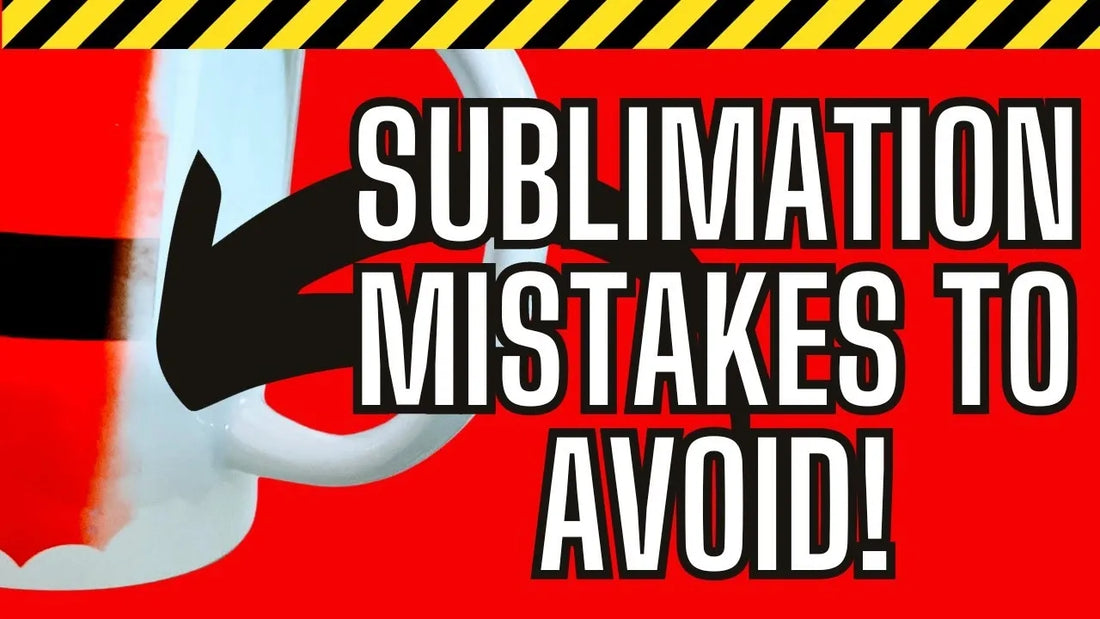
Common Mistakes in Sublimation and How to Avoid Them
Share
Sublimation printing has gained popularity due to its vibrant, long-lasting results. However, achieving the perfect print isn't always straightforward. Here are some common mistakes in sublimation printing and tips on how to avoid them to ensure your projects come out flawless.
1. Incorrect Temperature and Time Settings
Mistake: Using the wrong temperature and time settings can lead to faded prints, ghosting, or incomplete transfers.
Solution: Always refer to the manufacturer's guidelines for your specific sublimation paper and substrate. Generally, sublimation works best at temperatures between 375-400°F (190-205°C) for 45-60 seconds. Conducting test prints can help you find the optimal settings for your equipment.
2. Inadequate Pressure
Mistake: Applying too much or too little pressure during the transfer process can cause issues like blurry images or uneven transfers.
Solution: Adjust your heat press to the recommended pressure setting for your substrate. A medium to firm pressure usually works well for most sublimation projects. Ensure even pressure distribution across the entire surface to avoid inconsistencies.
3. Poor Quality Images
Mistake: Using low-resolution images can result in pixelated or blurry prints.
Solution: Use high-resolution images (300 DPI or higher) for the best results. Ensure your artwork is clear and detailed, and make necessary adjustments in your design software before printing.
4. Improper Alignment
Mistake: Misaligning the transfer paper on the substrate can lead to off-center or crooked prints.
Solution: Take your time to align the transfer paper correctly. Use heat-resistant tape to secure the paper in place before pressing. Some heat presses come with alignment grids to help you position your design accurately.
5. Moisture in the Substrate
Mistake: Moisture in the substrate can cause uneven transfers and color distortion.
Solution: Preheat your substrate for a few seconds to remove any moisture before applying the transfer. This step is especially important for substrates like fabric and ceramics, which can retain moisture.
6. Not Using the Right Sublimation Ink
Mistake: Using non-sublimation or incompatible inks can result in poor-quality prints and clogged printheads.
Solution: Always use sublimation inks specifically designed for your printer model. Regularly maintain your printer to prevent ink clogs and ensure consistent performance.
7. Skipping the Test Print
Mistake: Not doing a test print can lead to costly mistakes, especially on expensive substrates.
Solution: Always perform a test print on a similar material before proceeding with your final project. This practice helps you identify and correct any issues with alignment, color, or settings.
8. Ignoring the Cooling Process
Mistake: Removing the transfer paper too soon after pressing can cause smudging and ghosting.
Solution: Allow the substrate to cool down completely before removing the transfer paper. This step ensures that the ink has fully set and prevents any unwanted smudging.
9. Overlooking Substrate Quality
Mistake: Using low-quality or incompatible substrates can lead to poor print results.
Solution: Invest in high-quality, sublimation-ready substrates. Ensure the substrate has a polyester coating or is made of polyester material, as sublimation ink bonds best with polyester.
10. Inconsistent Pressure Application
Mistake: Applying uneven pressure can result in incomplete or uneven transfers.
Solution: Ensure your heat press applies consistent pressure across the entire surface. Regularly check and adjust the pressure settings to maintain even distribution.
Conclusion
Avoiding these common mistakes in sublimation printing can save you time, money, and frustration. By following the tips outlined above, you can achieve vibrant, high-quality prints that stand the test of time. Remember, practice makes perfect, so don’t hesitate to experiment and refine your technique to master the art of sublimation printing.
